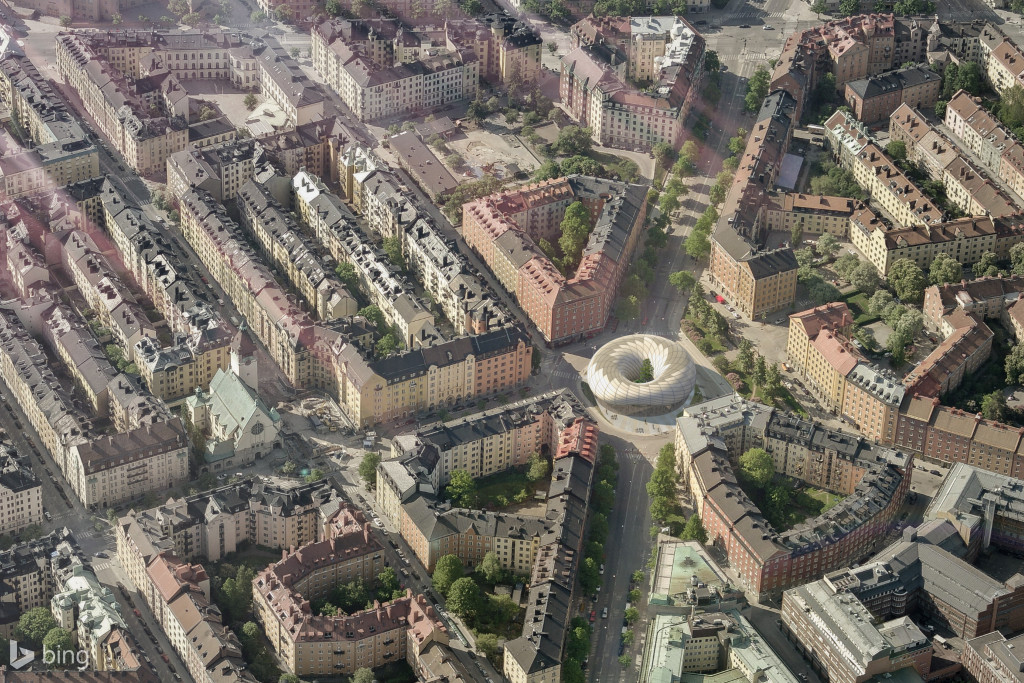
It would take a lot of insects, but Belatchew Labs is developing a concept project termed InsectCity with the aim of making Stockholm self-sufficient in protein through urban insect production. In order to visualize what an urban insect production might look like, Belatchew Labs has developed, in theory, the insect farm BuzzBuilding that would be situated in Vanadisplan, Stockholm, offering a large farmable surface for the breeding of crickets.
BuzzBuilding consists of a building which integrates the whole production flow of insects, from eggs to ready-to-eat insects. Additionally, BuzzBuilding would house a safe haven for endangered spieces of wild bees, which, in addition to ensuring the bees’ continued existence, also makes Stockholm a blooming and fruit-bearing city.
The proposed building has a so-called torus-geometry which, like a donut, has a hole in the middle. That is where a protected yard is created with a micro-climate that, together with a rich insect life, produces a thriving garden. The supporting structure of the building is a steel frame inspired by an exoskeleton, or outer shell, which resembles the structure of an insect and creates space without pillars. The secondary structure runs around the building in a spiral form and reinforces its insect-like design.
In order to capitalize on the heat from the sun, the building’s lining has been adapted to let through more or less sunlight as needed with the help of a composite containing an aerogel. By varying the thickness of this material, more or less sunlight enters the building. The upper façade panels are also given holes in varying sizes in order to attract different species of bees.
The façade cladding is done with composite sandwich panels consisting of two layers of fiber-reinforced plastic (FRP) with the aerogel filling. Because aerogels are very light, highly insulating and translucent, it’s possible to achieve high insulation with very thin layers of aerogel and still bring light into the building.
“This characteristic is crucial in Stockholm’s cold climate, where you need to insulate the building as much as possible, but at the same time we wanted to use the natural solar heating to make a warm climate inside BuzzBuilding,” according to Sara Le Normand, spokesperson for Belatchew.
“We did an annual insulation simulation and with the help of parametric design tools, defined which panels need to be thin to bring in light, and which ones need to be thicker to insulate,” Le Normand says. “This translucency is even beneficial during the night, since we light up the building with LED light. This allows us to change the light color to create a different visual appearance for the building and cheer up the urban space.”
The ground floor of the building would have a restaurant where insects are both cooked and sold. The goal is to make the production as public as possible, to ensure that in contrast to the hidden meat production, people are invited to observe and participate, and to share knowledge about where the food comes from.
 TEXTILES.ORG
TEXTILES.ORG


